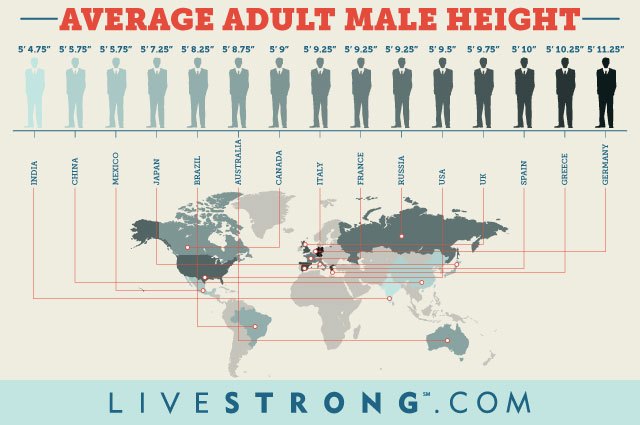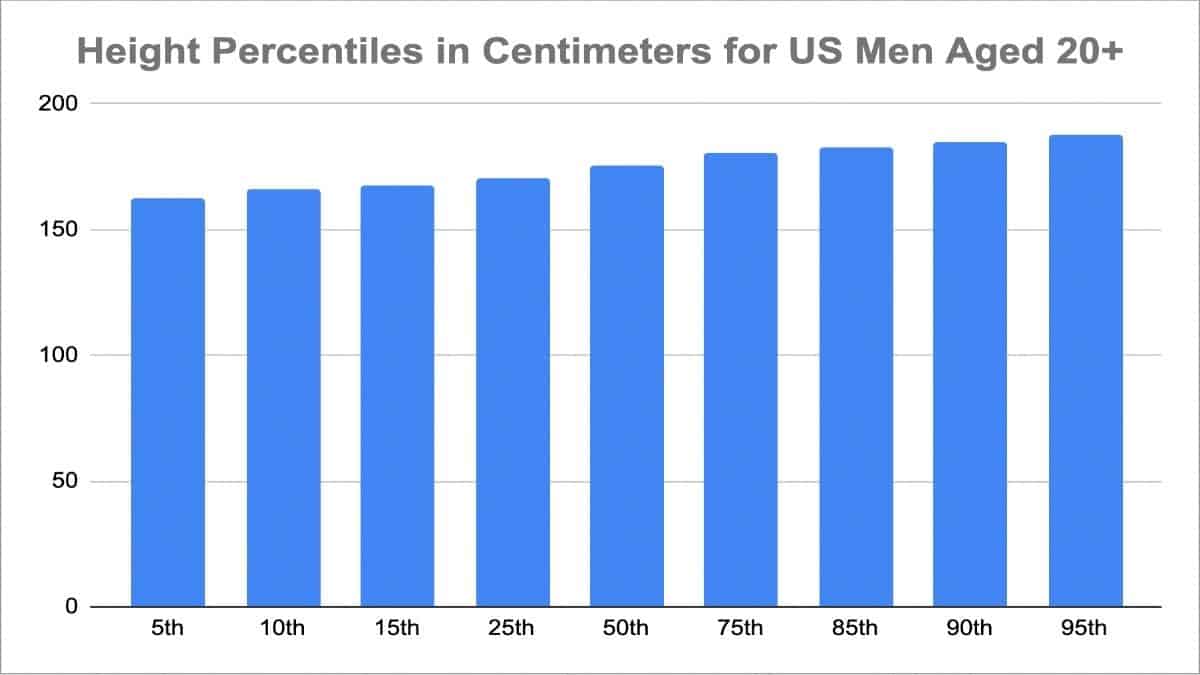Understanding the Average Height of American Men
The average height of American men is a topic of interest for many, as it provides insights into the general population’s health, genetics, and lifestyle factors. The typical height range for adult American men is between 5 feet 9 inches and 6 feet 0 inches, which is taller than the global average height for males. This difference can be attributed to a combination of genetic predispositions, nutrition, and overall living conditions.
How Genetics Influence the Height of American Men
Genetics play a significant role in determining the height of American men. On average, an American man will inherit approximately 60-80% of his height from his parents. The height of both mother and father is crucial in predicting the height of their offspring. A simple formula to estimate the height of an adult male child is to add the heights of both parents (in inches) and add 5 inches if the father is taller than the mother or subtract 5 inches if the mother is taller than the father. However, this formula is not always accurate, as multiple genes work together to determine height.
Height is a polygenic trait, meaning that it is influenced by several genes, each contributing a small amount to the overall height. Researchers have identified hundreds of genetic variants associated with height, but many more remain undiscovered. These genes can affect the growth and development of bones, cartilage, and other tissues responsible for height.
Nutrition and Lifestyle Factors Affecting the Height of American Men
Nutrition and lifestyle factors significantly impact the growth and development of American men during their formative years. A balanced diet, regular exercise, and adequate sleep are essential components for achieving optimal height.
A balanced diet rich in essential nutrients, such as calcium, vitamin D, protein, and carbohydrates, supports bone growth and development. Consuming dairy products, leafy green vegetables, lean meats, and whole grains ensures that the body receives the necessary nutrients for optimal growth. Additionally, maintaining a healthy body weight is crucial, as being underweight or overweight can negatively affect height.
Regular exercise, particularly weight-bearing activities like running, jumping, and resistance training, strengthens bones and muscles, promoting growth. Engaging in sports and physical activities during childhood and adolescence can contribute to increased height.
Adequate sleep is equally important, as the body grows and repairs tissues during rest. During growth spurts, teenage boys require up to 9-10 hours of sleep per night to support optimal growth and development.
The Relationship Between Age and Height in American Men
Height changes throughout an American man’s life, from childhood growth spurts to the gradual decline in height due to aging and posture changes. Understanding these fluctuations can provide valuable insights into the overall health and development of males in the United States.
During infancy and early childhood, boys grow rapidly, often outpacing their female counterparts in height gain. This growth spurt continues until puberty, when boys experience a significant surge in growth hormone production, leading to a rapid increase in height, muscle mass, and bone density. The peak growth period for boys typically occurs between the ages of 12 and 15, with the average American male reaching his maximum height around the age of 19.
After reaching their full height, American men may experience a slight increase in height due to improved posture and muscle development. However, as they age, the gradual decline in height becomes apparent. This process, known as shrinkage, is primarily caused by the compression of spinal discs, which can lose up to 20% of their original thickness over time. Additionally, factors such as osteoporosis, poor posture, and weight gain can further contribute to height loss in older men.
Regional Differences in the Height of American Men
Regional differences in the height of American men can be attributed to various factors, including socioeconomic status, nutrition, and genetic diversity. Examining these variations provides valuable insights into the complex interplay of genetics, lifestyle, and environmental influences on male height.
In the United States, men living in higher-income areas tend to be taller than those in lower-income regions. This correlation can be linked to better access to nutritious food, healthcare, and educational opportunities, which contribute to optimal growth and development. Furthermore, genetic diversity plays a role in regional height differences, as populations in certain areas may have inherited genes associated with increased height.
Nutritional disparities also impact regional height variations. Areas with abundant access to fresh produce, lean proteins, and dairy products tend to have taller male populations. In contrast, regions with limited access to nutritious food options may experience stunted growth and development due to malnutrition. Additionally, cultural factors and food preferences can influence dietary choices, further contributing to regional differences in height.
Historical Trends in the Height of American Men
Historical trends in the height of American men reveal a fascinating evolution in growth patterns, reflecting improvements in nutrition, healthcare, and living conditions over time. Examining these developments offers valuable insights into the complex interplay of genetics, lifestyle, and environmental factors influencing male height.
In the late 19th and early 20th centuries, the average height of American men was approximately 5 feet 7 inches. However, as living conditions improved, so did the average height. By the mid-20th century, the average American male stood at around 5 feet 9 inches, and by the end of the century, the average height had increased to nearly 5 feet 10 inches. This growth trend can be attributed to advancements in nutrition, healthcare, and overall living standards.
Improved nutrition has played a significant role in the increased height of American men. Over time, access to a more varied and nutrient-rich food supply, including dairy products, fruits, vegetables, and lean proteins, has contributed to optimal growth and development. Additionally, advancements in healthcare, such as the eradication of diseases like polio and improved prenatal care, have positively impacted male height.
How to Measure Height Accurately
Measuring height accurately is essential for tracking growth patterns, assessing health status, and understanding the complex interplay of genetics, nutrition, and lifestyle factors influencing the height of American men. By following a step-by-step guide and employing proper techniques, individuals can ensure precise height measurements.
- Stand against a wall with bare feet, wearing light clothing, and heels flat on the ground.
- Ensure the back is fully against the wall, with the buttocks and shoulder blades touching it. Keep arms relaxed at the sides.
- Place a level horizontal object, such as a book, on the head, ensuring it is parallel to the floor.
- Mark the point where the object meets the wall with a pencil.
- Measure the distance from the marked point to the floor using a metal tape measure, ensuring it is held straight and level.
- Record the measurement to the nearest ¼ inch or 0.1 centimeter.
Maintaining proper posture is crucial for accurate height measurements. Slouching, bending the knees, or wearing heavy footwear can lead to inaccurate results. Utilizing appropriate measuring tools, such as a metal tape measure, ensures precision and consistency in height assessments.
Tall Tales: Debunking Myths About the Height of American Men
The height of American men is often the subject of various myths and misconceptions, which can lead to misunderstandings about the complex interplay of genetics, nutrition, and lifestyle factors influencing their stature. Debunking these tall tales is essential for promoting accurate information and fostering a better understanding of the factors affecting male height.
Myth 1: All American men are tall
While the average height of American men is taller than the global average, not all American men are tall. Height varies significantly within the population, influenced by genetic, nutritional, and lifestyle factors. There is a range of heights, with some men falling below the global average.
Myth 2: Height is solely determined by genetics
Although genetics plays a significant role in determining height, it is not the only factor. Nutrition, lifestyle, and environmental influences also contribute to the final height of an individual. Adequate nutrition, regular exercise, and quality sleep during growth periods are crucial for optimal growth and development.
Myth 3: American men have stopped growing taller
Historical trends indicate that the average height of American men has been increasing over time, thanks to improvements in nutrition, healthcare, and living conditions. While the rate of increase may vary, it is unlikely that American men have stopped growing taller.
Myth 4: Height can be significantly increased through interventions
While proper nutrition, exercise, and sleep during growth periods can support optimal growth, there is no scientific evidence to suggest that height can be significantly increased beyond one’s genetic potential through interventions such as stretching or specialized shoes.








